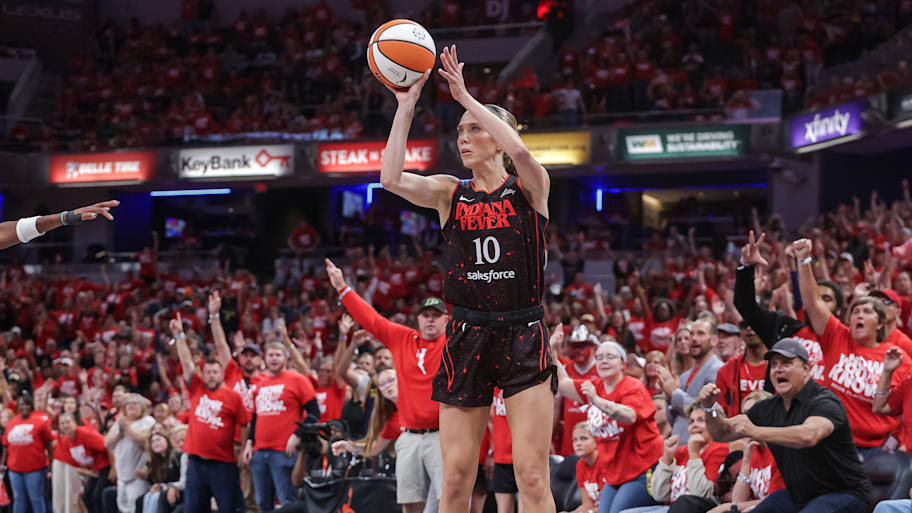There are few sports debates as perennially reliable as the particulars of home-court advantage. The subject has been studied in academic publications for decades. (Start by taking your pick from the Journal of Functional Morphology and Kinesiology or the Social Psychology Quarterly or the Journal of Quantitative Analysis in Sports.) Collective lifetimes have been spent discussing it on blogs and over talk radio and in sports bar arguments. There is a documented advantage here. But why, and to what degree, and how much that may have shifted in recent years remain endlessly recyclable questions.
No concrete answers to any of those have been found in these WNBA playoffs. But if the first round of the postseason has not quite explained the power of home court, it has at least shown the fun of it, and the texture that it can add to a series.
A new playoff format this year has guaranteed a home game for every team. That change has been answered by the most dynamic first round in recent memory. Of the four opening series, three are going down to a winner-take-all third game, with the fourth a single possession away from doing the same. That is not all (or even mostly) attributable to home court. But it’s made for a better, spicier platform for a league that is ready for it.
This marks the fourth postseason since the WNBA tweaked its playoff format to begin with best-of-three series rather than single-elimination play-ins. But it’s the first to change where those series are played. Previously, the first two games were hosted by the higher seed, and if needed, the final game was hosted by the lower seed. There were obvious frustrations with that 2–1 format. Lower seeds griped about not getting a guaranteed home game, and higher seeds disliked having to play a series-clinching, winner-take-all game on the road. The league responded by switching this year to 1-1-1: guaranteeing at least one home playoff game for each team and ensuring that a third game would be played on the court of the higher seed. It meant increased travel. But the league was betting that would be worth it.
Each of the four opening series last year were sweeps. That was an unusually chalky outcome: There had been three sweeps in 2023 and two in ’22. But it was a fair representation of what the old format could be at its most predictable. There were some close games, yes, but none of the spark or variety that comes with a change of venue. It could make the first round feel almost perfunctory. Compare that to the proceedings this year.
I’ve never seen anything like this. The Valkyries lost but the crowd stayed on their feet. GSV chants throughout. They’ve set the gold standard for a WNBA fanbase. pic.twitter.com/KHFVPW2AvV
— Matt Lively (@mattblively) September 18, 2025
After a season of wrenching injuries, extended trials, and unexpected departures, the Fever got to win their first playoff game in a decade at home in Indianapolis. The Storm got to break the Aces’ historic win streak with a stunning comeback in Seattle. The No. 8 seed Valkyries couldn’t take out the No. 1 seed Lynx, but when they built a commanding lead to give themselves a chance, they did it in the Bay Area. The dynamic has been striking even in the reverse: After the Liberty had the pleasure of knocking off the Mercury on the road during Game 1 in Phoenix, they got rewarded by a taste of their own medicine, dropping a miserable Game 2 at home in New York.
It would be wrong, of course, to say the changed format made these wins (and losses) possible. But it made them more vibrant. As the league has grown, its teams have been increasingly able to establish a real sense of place in their respective arenas. There have long been distinct cultures of fandom here. But it’s clearer than ever how that can manifest at scale. There’s a sense of tradition even where there is not yet much history. (Look no further than all the sellouts and homemade signs of expansion franchise Golden State.) The new format was made easier by the recent adoption of charter travel and likely prompted by a growing number of teams suddenly curious about the potential for more playoff gate revenue. But the difference feels emotionally salient just as much as practically so.
There are differences in arena capacity and other factors, but still, consider that the highest attendance at a Game 2 in the first round last year was roughly 11,000. The lowest Game 2 attendance this year was 12,500, with a peak of 18,543 seen at Golden State, even though the team needed to relocate the game to San José due to a scheduling conflict with the Laver Cup at its usual arena in San Francisco. One team will have to lose in each of the Game 3s on Thursday and Friday. But it’s hard not to feel like everyone else has won.
More WNBA Playoffs on Sports Illustrated
This article was originally published on www.si.com as Everybody Wins With the WNBA’s Spicier First-Round Playoff Format.
